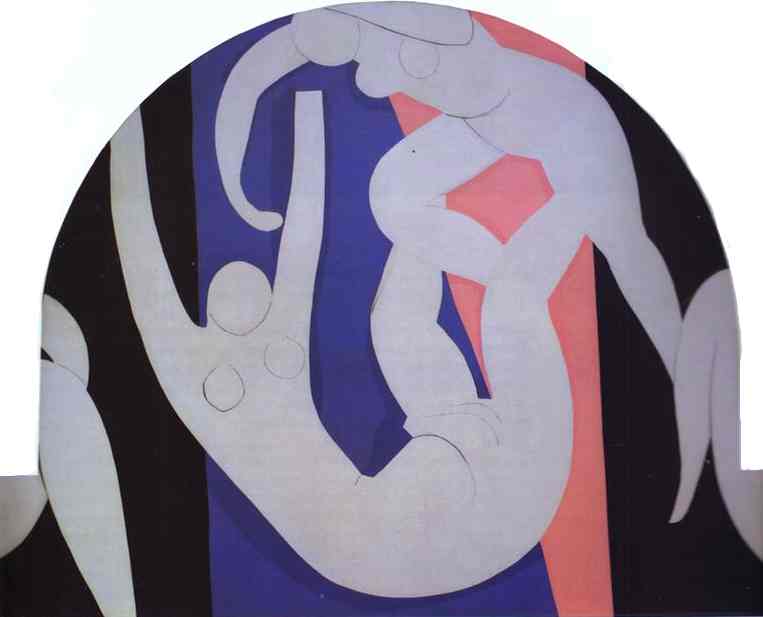art-Matisse.com
Henri Matisse 1869-1954
©Henri Matisse - The Dance 1933
 The Dance |

Dance: After the Paris version of the Barnes Mural
1935 30x80cm Etching and color aquatint on paper, edition 26/50
Metropolitan Museum of Art, New York City
This print depicts Matisse’s major mural composition Dance,
commissioned in autumn 1930 by the renowned American
collector Dr. Albert C. Barnes, of Merion, Pennsylvania.
Barnes, who began collecting Matisse’s work in 1912, had by 1930
amassed the largest and most significant group of the artist’s oils,
watercolors, gouaches, and sculpture in America. He wanted as
the “crown jewel” of the collection a large mural for the
two-story paintings gallery in his mansion.
From Wikipedia, the free encyclopedia :
The Dance II by Henri Matisse is a triptych mural (15 ft high by 45 ft long) in the Barnes Foundation. It was created in 1932 at the request of Albert C. Barnes after he met Matisse in the United States. Barnes was an art enthusiast and long-time collector of Matisse's works, and agreed to pay Matisse a total of $30,000 for the mural, which was expected to take a year.
The mural was to be placed above three arches spanning the windows of the main hall of Barnes' gallery. In Nice, France, Matisse executed the mural on canvas provided by Barnes, as opposed to working on site. This was an unusual approach for such a work, but the patron had offered him complete artistic freedom, and working onsite would in any event have been impractical.
For Matisse, the project proved to be beset with difficulties, and would end up taking him two years, leaving him physically and emotionally drained. He was also profoundly disappointed to be told on installation that Barnes had no intention of exhibiting the work to the public.
Nevertheless, Matisse was delighted with the work itself. In a 1933 letter to his son, Matisse wrote about the installation at the Barnes Foundation: "It has a splendour that one can't imagine unless one sees it -- because both the whole ceiling and its arched vaults come alive through radiation and the main effect continues right down to the floor...I am profoundly tired but very pleased. When I saw the canvas put in place, it was detached from me and became part of the building."
Some commentators consider that the Dance mural was pivotal in enabling Matisse to return to the most essential sources of his art. For Matisse, the work highlighted aspects such as simplicity, flattening, the emphasis on colour and the use of paper cut-outs which would all go on to play an important role in his later artistic development.